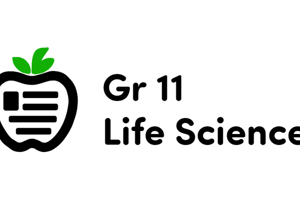Podcast
Questions and Answers
Match the following organisms with their respiratory methods:
Match the following organisms with their respiratory methods:
Amoeba = Cell membrane Fishes = Gills Ants = Spiracles Earthworms = Moist skin Cockroaches = Spiracles
The path of oxygen entering the human body during respiration is: Nostrils, Nasal cavity, Pharynx, Trachea, Bronchi, Bronchioles, Alveoli, Blood, _____
The path of oxygen entering the human body during respiration is: Nostrils, Nasal cavity, Pharynx, Trachea, Bronchi, Bronchioles, Alveoli, Blood, _____
Cells
What is the primary function of the alveoli?
What is the primary function of the alveoli?
- Producing energy
- Pumping blood
- Breathing air
- Gaseous exchange (correct)
What happens to carbon dioxide in the lungs?
What happens to carbon dioxide in the lungs?
Breathing involves inhalation and exhalation.
Breathing involves inhalation and exhalation.
How do guard cells function in the process of respiration in plants?
How do guard cells function in the process of respiration in plants?
Flashcards are hidden until you start studying
Study Notes
Human Respiratory System
- Comprises key structures: Nasal Cavity, Oral Cavity, Pharynx, Larynx, Trachea, Bronchus, Alveoli, Bronchioles, Diaphragm, Lungs, and Heart.
Gaseous Exchange
- Occurs in alveoli, where oxygen enters the blood and carbon dioxide exits.
- Oxygen binds to hemoglobin in the bloodstream, allowing transportation throughout the body.
- Carbon dioxide diffuses from the blood into the alveoli for exhalation.
Cellular Respiration
- Blood, pumped from the heart, travels through arteries to smaller vessels, ultimately reaching capillaries.
- Oxygenated blood supplies glucose to cells, aiding in energy production.
- Carbon dioxide produced during cellular respiration is absorbed by capillaries and returned to the heart.
Respiration in Other Animals
- Amphibians like frogs respire through skin in water and through lungs on land.
- Earthworms and leeches exchange gases via their moist skin surface.
- Unicellular organisms such as amoebas respire across their cell membrane.
Respiration Through Air
- Cockroaches use spiracles connected to tracheae for respiratory gas exchange.
- Animals like horses, birds, and monkeys breathe through lungs, utilizing nasal passages for gas exchange.
Respiration Through Gills
- Fish utilize gills, which expand surface area for gas exchange through filaments and capillaries.
- Water enters the fish’s mouth, flows over gills, where oxygen is absorbed, and carbon dioxide is released.
Respiration in Plants
- Plants take in oxygen and release carbon dioxide via stomata regulated by guard cells.
- Stomata open and close to manage gaseous exchange, influenced by environmental conditions.
Mechanism of Breathing
- Involves alternating inhalation (intake of oxygen) and exhalation (release of carbon dioxide).
- Breathing rate varies with activity; it increases during exercise to meet oxygen demands.
- Rib movements and diaphragm adjustments change chest cavity volume, facilitating airflow into and out of the lungs.
Path of Oxygen During Respiration
- Oxygen travels sequentially through: Nostrils → Nasal Cavity → Pharynx → Trachea → Bronchi → Bronchioles → Alveoli → Blood → Cells.
Key Terms
- Respiration: The biochemical process of exchanging gases, critical for cellular functions and energy production.
Studying That Suits You
Use AI to generate personalized quizzes and flashcards to suit your learning preferences.




